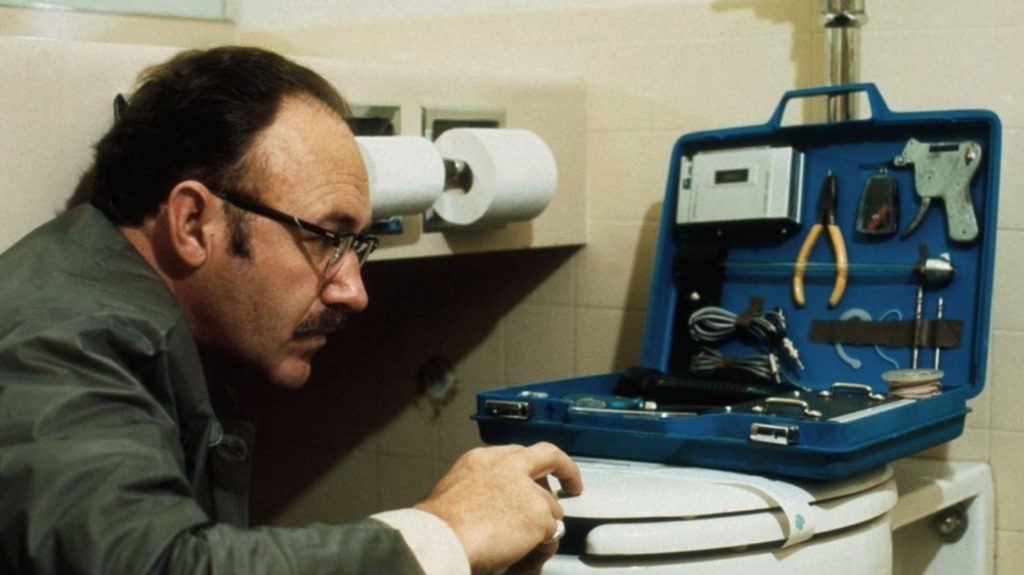
Fail-Safe (1964): Cold War Tensions on the Silver Screen – Film Review

Released in 1964, Sidney Lumet’s “Fail-Safe” is a gripping Cold War thriller that delves into the terrifying potential for accidental nuclear warfare. Adapted from the novel by Eugene Burdick and Harvey Wheeler, the film portrays a scenario where human error and technological failures bring the world to the brink of annihilation. “Fail-Safe” was released in the same year as Stanley Kubrick’s satirical “Dr. Strangelove or: How I Learned to Stop Worrying and Love the Bomb,” offering a starkly different, serious take on similar subject matter. While “Dr. Strangelove” approached the topic with dark humor, “Fail-Safe” maintained a tone of grave realism, emphasizing the horror and fragility of human error in the nuclear age.
The Narrative and Its Urgency
“Fail-Safe” is characterized by its intense narrative, which unfolds in real-time, adding to the sense of urgency and impending doom. The film’s plot is straightforward yet harrowing: an error in the United States’ strategic command system sends a group of American bombers on a mission to drop nuclear bombs on Moscow. Despite frantic efforts by military and political leaders to recall the bombers, the mission continues inexorably towards disaster.
- Real-Time Tension: The real-time unfolding of events creates a claustrophobic atmosphere, drawing viewers into the relentless march toward potential nuclear war.
- Mistaken Orders: The central premise of mistaken orders due to a technical glitch highlights the precariousness of relying on complex systems for national security.
- Diplomatic Efforts: The film meticulously depicts the desperate diplomatic efforts to avert catastrophe, emphasizing the thin line between peace and destruction.
Character Performances and Dynamics
The film features a stellar cast, whose performances bring depth and intensity to the narrative. Each character’s response to the unfolding crisis reflects broader themes of duty, morality, and human fallibility.
- Henry Fonda as President: Fonda’s portrayal of the President is a masterclass in calm under pressure. His character’s resolve and moral clarity anchor the film, even as he faces the unimaginable decision of ordering a retaliatory strike against his own country to prevent further escalation.
- Walter Matthau as Professor Groeteschele: Matthau’s character, a civilian advisor, embodies the cold, calculating mindset of some military strategists. His rationalizations for extreme measures highlight the ethical dilemmas inherent in nuclear strategy.
- Dan O’Herlihy as General Black: O’Herlihy delivers a nuanced performance as General Black, a man grappling with the potential consequences of his actions. His character’s personal connections to those involved in the crisis add a poignant layer to the narrative.
Themes of Technology and Human Error
At its core, “Fail-Safe” is a meditation on the intersection of technology and human fallibility. The film explores how technological advancements, while designed to enhance security, can also introduce new vulnerabilities.
- Reliance on Technology: The film underscores the dangers of over-reliance on technology, particularly in matters of life and death. The catastrophic chain of events is triggered by a single, seemingly minor technical malfunction.
- Human Judgment: Despite advanced systems, human judgment remains crucial. The film portrays the struggle of leaders and operators to interpret and respond to the unfolding crisis, often with incomplete information.
- Ethical Implications: The ethical implications of technological warfare are starkly presented. Characters grapple with decisions that have profound moral consequences, illustrating the heavy burden of command in the nuclear age.
Visual Style and Cinematic Techniques
Sidney Lumet’s direction in “Fail-Safe” employs a stark, almost documentary-style approach that enhances the film’s sense of realism and immediacy. The visual and auditory choices contribute significantly to the film’s impact.
- Black-and-White Cinematography: The choice to film in black-and-white adds to the stark, unforgiving tone of the narrative. The high-contrast imagery accentuates the tension and the bleakness of the situation.
- Close-Ups and Tight Framing: Lumet’s use of close-ups and tight framing intensifies the claustrophobic atmosphere. The focus on characters’ faces during moments of decision and crisis brings the emotional stakes to the forefront.
- Minimalist Sets: The minimalist sets, particularly the War Room and the control centers, emphasize the isolation and pressure faced by the characters. The sparse, utilitarian design reflects the cold, impersonal nature of technological warfare.
Comparative Analysis: “Fail-Safe” vs. “Dr. Strangelove”
The simultaneous release of “Fail-Safe” and “Dr. Strangelove” invites inevitable comparisons. Both films address the same fundamental fears of the Cold War era but do so through vastly different lenses.
- Tone and Genre: “Fail-Safe” is a serious thriller that emphasizes the grave potential for accidental nuclear war. In contrast, “Dr. Strangelove” uses satire and dark comedy to critique the absurdity of nuclear policies and the fallibility of those in power.
- Depiction of Characters: Characters in “Fail-Safe” are portrayed with a sense of duty and moral responsibility, whereas “Dr. Strangelove” features exaggerated, often farcical characters who highlight the absurdities of the Cold War mentality.
- Resolution: Both films end with the specter of nuclear destruction, but their paths to this conclusion differ. “Fail-Safe” maintains a tone of tragic inevitability, while “Dr. Strangelove” concludes with a darkly humorous acceptance of annihilation.
Cold War Context and Cultural Impact
“Fail-Safe” was released during a period of heightened Cold War tensions, reflecting the pervasive anxiety of the era. Its cultural impact extends beyond its immediate reception, influencing subsequent portrayals of nuclear warfare in film and media.
- Reflection of Public Fears: The film captures the existential dread of the Cold War, where the threat of nuclear annihilation loomed large in the public consciousness. It serves as a sobering reminder of the real-world stakes of geopolitical conflicts.
- Influence on Media: “Fail-Safe” has influenced numerous films and television shows that explore similar themes of technological fallibility and the ethics of warfare. Its realistic portrayal of crisis management has become a benchmark for serious depictions of nuclear conflict.
- Enduring Relevance: The themes of “Fail-Safe” remain relevant in the modern era, where technological advancements continue to raise questions about security, ethics, and human oversight. The film’s cautionary message about the potential for accidental catastrophe resonates in contemporary discussions about artificial intelligence and automated systems.
Directorial Mastery
Sidney Lumet’s direction is a key factor in the film’s effectiveness. Known for his ability to elicit powerful performances and his meticulous attention to detail, Lumet brings a sense of urgency and authenticity to “Fail-Safe.”
- Character-Driven Tension: Lumet’s focus on character interactions and emotional responses drives the film’s tension. The director’s background in theater is evident in the tightly controlled, dialogue-heavy scenes that reveal the inner turmoil of the characters.
- Pacing and Timing: The film’s pacing is deliberate, reflecting the inexorable progression toward disaster. Lumet expertly balances moments of frantic activity with scenes of quiet, contemplative tension, creating a rhythm that keeps the audience on edge.
- Moral Complexity: Lumet avoids easy answers, instead presenting the moral complexity of the situation. His direction ensures that each character’s perspective is given weight, highlighting the difficult choices and ethical dilemmas inherent in nuclear strategy.
The Legacy of “Fail-Safe”
“Fail-Safe” has secured its place in the canon of Cold War cinema, not just for its gripping narrative and strong performances, but for its unflinching portrayal of the dangers of nuclear warfare. Its legacy is multifaceted, encompassing its impact on the genre, its cultural significance, and its ongoing relevance in contemporary discussions about technology and security.
- Genre Influence: As a high-water mark in the Cold War thriller genre, “Fail-Safe” has influenced countless films and shows that tackle themes of nuclear tension and geopolitical crises.
- Cultural Reflection: The film serves as a historical artifact, encapsulating the fears and anxieties of the 1960s. It offers a window into the mindset of a world living under the constant threat of nuclear conflict.
- Ongoing Relevance: The cautionary tale of “Fail-Safe” continues to resonate, particularly in an era where technological advancements have introduced new forms of risk and uncertainty. Its exploration of human error and technological reliance remains pertinent in discussions about modern warfare and security systems.
Conclusion
“Fail-Safe” remains a compelling and sobering examination of Cold War anxieties, technological fallibility, and the ethical complexities of nuclear warfare. Its stark realism, strong performances, and moral weight ensure its place as a classic in the genre, continuing to provoke thought and reflection on the precarious balance of power in a technologically advanced world.




